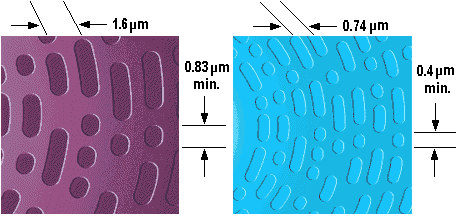Like DVD discs, there is little to distinguish a DVD-ROM drive from an ordinary CD-ROM drive as the only giveaway is the DVD logo on the front. Even inside the drive there are more similarities than differences: the interface is ATAPI or … [Read more...]
Regional codes for DVDs
Motion picture studios want to control the home release of movies in different countries because cinema releases aren't simultaneous (a movie may come out on video in the U.S. when it's just hitting screens in Europe). Also, studios sell distribution rights to different foreign … [Read more...]
DVD Content Protection
Developed by the so-called 4C group - Intel, IBM, Matsushita and Toshiba - in co-operation with the Copy Protection Technical Working Group (CPTWG), the Content Protection System Architecture (CPSA) provides an overall framework for content … [Read more...]
DVD Encoding
DVD-Video can be encoded to either MPEG-1 or MPEG-2, as summarised in the table below: MPEG-2 MPEG-1 PAL/ SECAM resolutions 720 x 576 704 x 576 352 x 576 352 x 288 352 x 576 352 x 288 NTSC resolutions 720 x 480 704 x 480 352 x 480 352 x 240 352 x … [Read more...]
CDR-RW Compatibility Issues
The DVD format has been dogged by compatibility problems from the very beginning. Some of these have now been addressed but others, in particular those concerning the rewritable and video variants, persist and look as though they might escalate … [Read more...]
DVD File Systems
One of the major achievements of DVD is that it has brought all the conceivable uses of CD for data, video, audio, or a mix of all three, within a single physical file structure called UDF, the Universal Disc Format. Promoted by the Optical … [Read more...]
DVD OSTA
The Optical Storage Technology Association (OSTA) is an association-not a standards body-and its members account for more than 80 percent of all worldwide writable optical product shipments. Its specifications represent a consensus of its … [Read more...]
DVDs – digital versatile disks – how they’re made and how they work
At first glance, a DVD disc can easily be mistaken for a CD: both are plastic discs 120mm in diameter and 1.2mm thick and both rely on lasers to read data stored in pits in a spiral track. And whilst it can be said that the similarities end there, it's also true that DVD's seven-fold increase … [Read more...]
DVD Formats
Not unlike the different flavors of CDs, there are five physical formats, or books, of DVD: DVD-ROM is a high-capacity data storage medium DVD-Video is a digital storage medium for feature-length motion pictures DVD-Audio is an audio-only … [Read more...]
History of DVD development and birth of the DVD Forum
When Philips and Sony got together to develop CD, there were just the two companies talking primarily about a replacement for the LP. Decisions about how the system would work were carried out largely by engineers and all went very smoothly. The specification for the CD's successor … [Read more...]
